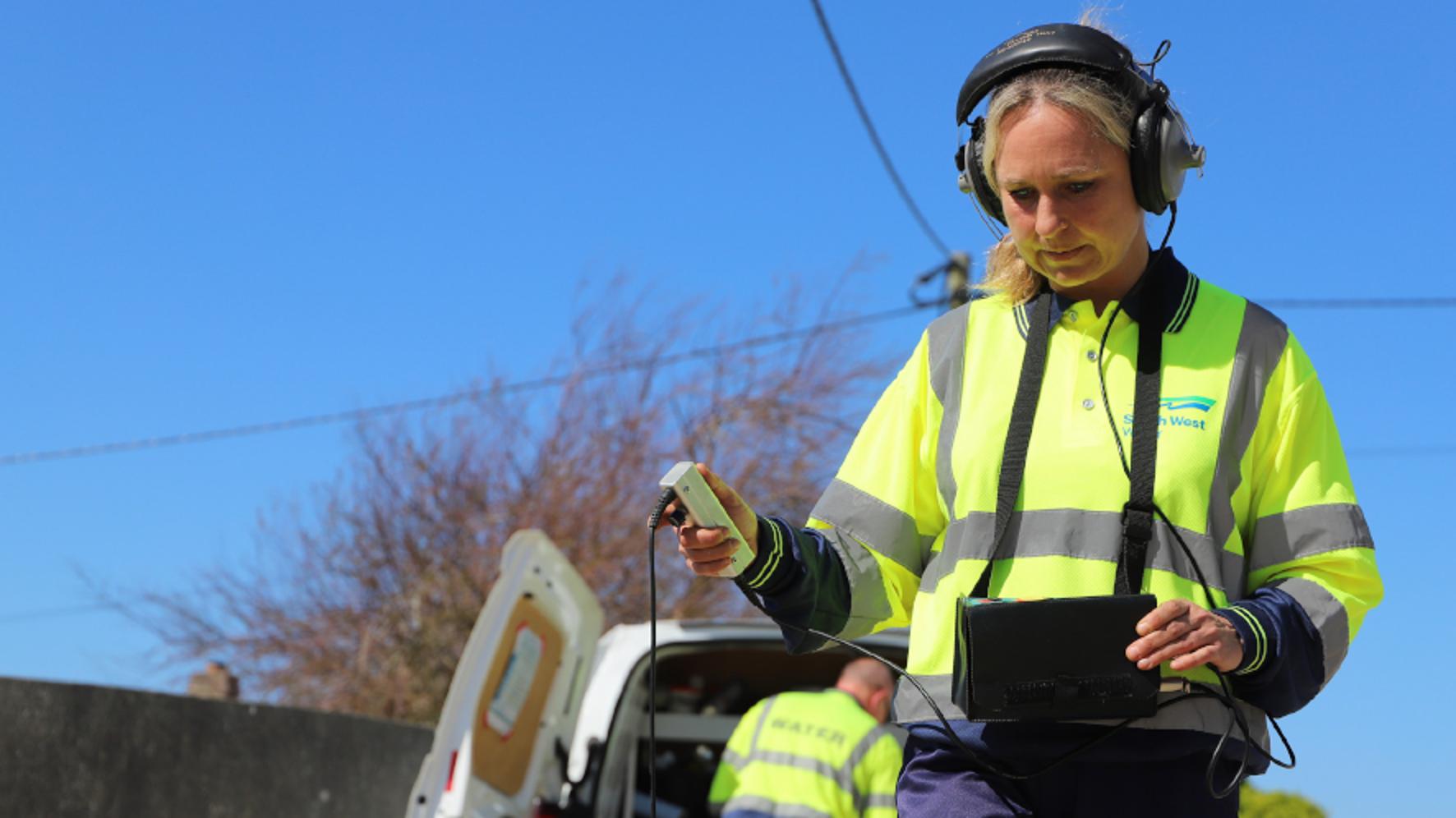South West Water has reduced the amount of water lost to leaks by over 10 million litres a day thanks to the efforts of its teams and the use of new technology.
Over the last 12 months South West Water has increased the amount of leaks its teams are detecting by 93%, driven by enhanced digital tools.
This has been achieved by investing in new, highly sensitive detection equipment that can detect noise from leaks hundreds of metres away, and by trialling new techniques from using dogs who sniff out chlorine in drinking water to satellite imagery and drones, looking for signs of leakage in harder to reach areas.
As a result, last year the company repaired over 16,100 leaks, averaging 44 leaks per day, every day, and despite having reduced leakage by over 20% since 2020, it has plans to halve it by 2050.
As well as fixing leaks on its own network, around 30% of water loss in the region comes from pipework that belongs to customers, and the company is working hard to help customers find these leaks and to support people with repairs.
As part of its increased focus on leak awareness, South West Water is helping customers to recognise and respond to issues more proactively by encouraging them to check for signs of leakage and supporting them with guidance on identifying and addressing leaks on private supply pipes.
Once located, South West Water will then offer a contribution for customers who repair or replace their supply. Last year over £300,0000 was given to customers, who can also claim for a leak allowance for water lost against the leak so it does not impact their bill.
Karl Little, South West Water’s Water Loss and Control Delivery Manager, said: “We’ve seen the warmest summer on record this year and when combined with long periods of dry weather this puts a lot of pressure on our water resources, making the need to tackle leaks more important than ever."
“Thanks to a range of innovative technologies and techniques, we are now finding record numbers of leaks which means our brilliant teams can focus on making repairs and saving as much water as possible when it is needed most."
“We also know that around 1 in 3 leaks in our region are on customer supplies and we’re here to help. I would encourage anyone who thinks they may have a leak at home to visit our website and see the support we can offer.”
Visit the leaks page for more information on how to report a leak, and how to check for leaks at home.
